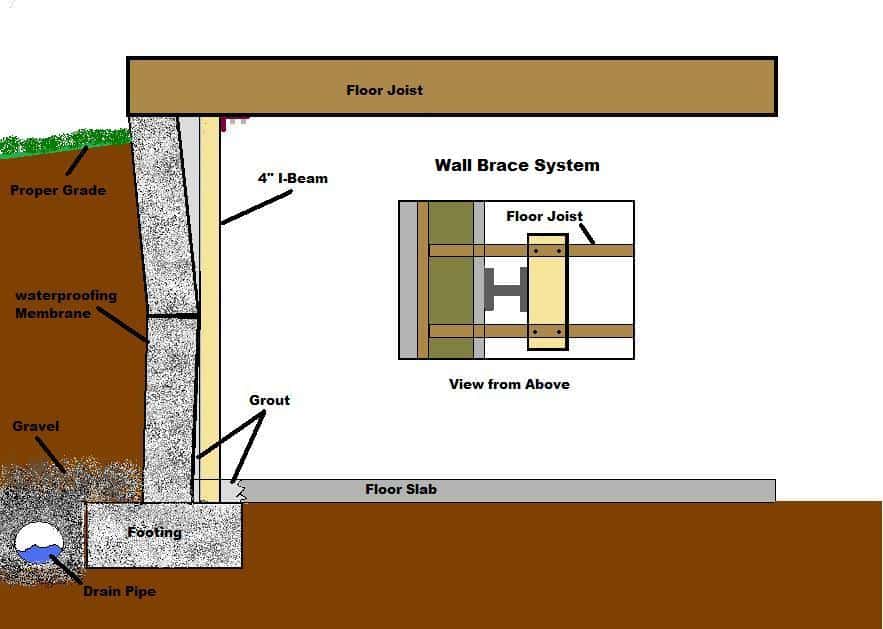Wall Straightening
Foundation walls can move “laterally” which means to lean or bow during the seasonal changes here in the Midwest. Walls typically move inward during times when the soil is saturated from rain and then move back out during the dry season. In many cases, the walls will not move out or “recover” as much as they moved in and you end up with a lean or even a bow in your wall.
General rules for repairing wall movement are based on the amount of movement, type of movement, and the way the structure is built:
- Less than 1″: The wall can recover on its own, Do preventative maintenance like dirt, gutter drains, and concrete leveling.
- More than 1″: The wall will no longer recover on its own, brace the wall and re bond all wall cracks.
- More than 3″: Catastrophic failure of wall, excavate wall and straighten back to plumb or within the 1″ tolerance.
Foundation 1 has established itself as one of the top wall straightening companies in the Midwest. Whether your wall is bowing, leaning, or displaced, we can bring any wall back to plumb.
Call today or fill out the form on this page to get you free consultation. We work on all foundation types including poured concrete, cinder block, and stone / masonry. We have a number of wall straightening techniques to work in these different circumstances, from basic approaches up to complex full wall rebuilds. Click here to see some recent job site photos.
It’s always advisable to have professionals like Foundation 1 repair your bowing walls, especially if it’s more than two inches out of alignment. However, it always helps to research and understand the different steps involved in diagnosing and repairing your basement closer to its original position and structural integrity.
First, there are several different possible reasons why a wall is bowed:
- Water: Water damage can cause cracks and bowing, and it is often a result of poor water drainage around the home, and it often appears as zig-zag-shaped cracks on a wall.
- Settling: As a house sinks into the soil on which it was built, it begins to settle. Though this process is typical, too much jostling can form vertical cracks that run up and down the length of its walls.
- Lateral Pressure: This can come from water pressure, expansive soil, super-absorbent soil, or frozen ground.
What to do next? After inspecting the basement walls, the next step is to choose a repair method (for example, hydraulic cement). After that, you may either opt to use steel beams to act as wall anchors and reinforce the walls.
A second method that is highly successful in securing walls close to their original position is the use of carbon fiber strapping, which you can place every 48 inches to offer support to a wall that is severely bowed. If you decide to call a professional, they may opt to either install wall anchors or metal beams to help push the wall back into alignment.
Construction experts used to working in Southern climates like Missouri note that more moist soils often necessitate annual adjustment of screws, if opting for steel beam repair. However, if you are in need of a reliable method of reinforcement, steel beams are definitely a safe bet. If you live in a climate with a good deal of rainfall, it’s advisable to remove the damaged wall section, if possible, replace it with brick and mortar blocks, and then to install a drainage system consisting of a perforated drainpipe surrounded by a mound of gravel.
Alternately, you may opt to rebuild the walls, as a last resort. You’ll definitely want to leave this route to the professionals, just to be on the safe side.
Click here to see some recent job site photos.
See a video on our wall push technique.


